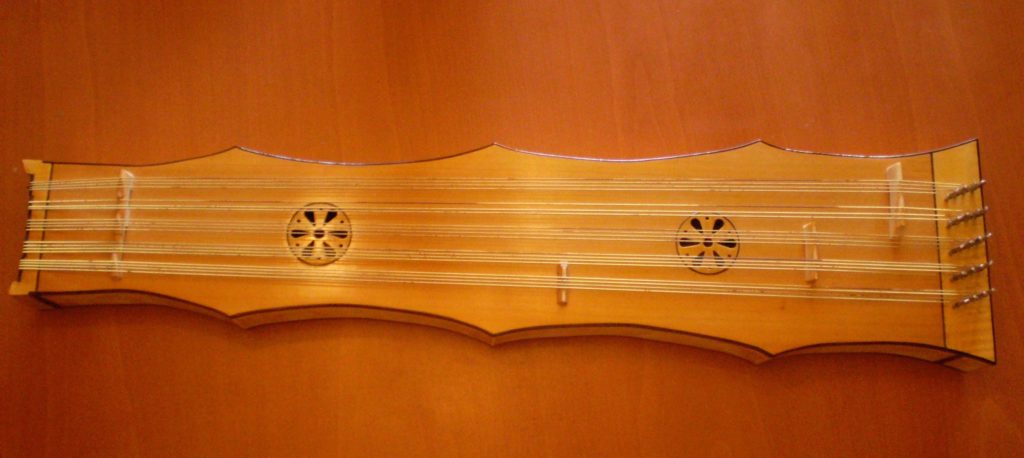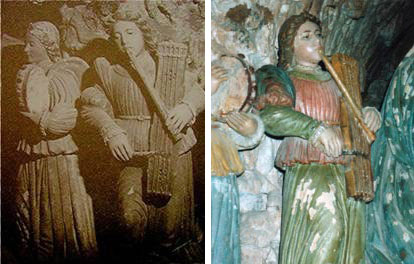THE BUTTAFUOCO, STRINGS DRUM
The buttafuoco is one of the main 16th-17th century string instruments typical of the Neapolitan area, which had its historical development in Western Europe, from the Middle Ages to the Baroque. It is still in use in the traditional music of a restricted geographical area of the Pyrenees, divided by the border between Spain and France, where it is identifiable, mainly, with the name of tambor de cuerdas / tambourin à cordes.
Probably of Spanish origin, and in use in Italy from the Renaissance until the mid-17th century, the buttafuoco can be identified with a particular percussion psaltery which, as a drone instrument, is played by the same player, together with a flute (a small flute with only 3 holes). In fact, supported with one arm, usually the left, and leaning against the body, the buttafuoco is struck by a stick (at the time called mace) held by the right hand, while the left hand plays the whistle. Only one player can play the melody, the rhythm and the harmonic support, so that it is possible to perform the dances at the time that are pleasing to the dancers.

BUTTAFUOCO rebuilt by Vincenzo Cipriani

Buttafuoco
Sculptures of the Nativity, by Altobello Persio and Sammazzaro d’Alessano, 1534, Cathedral of Matera
On a technical level, in reality, the buttafuoco is not difficult to play, because it is a percussion instrument, and the stick that beats it performs rhythms hitting all the strings at the same time (so without inclination, but used with a flat stroke). It is much more difficult to manage the 3-hole flute, due to the harmonic sound technique; the whistle has a fairly extensive scale (about two octaves), suitable for modal melodies (ie on the drones of the instrument).
The Renaissance buttafuoco was an instrument linked to the popular world but, given its effectiveness and appreciation, it was also used in a noble context (and played by them, as in the case of Baldano; moreover, it is depicted on the bas-reliefs of some tombstones of noble families , in Naples). The buttafuoco’s relationship with the musical tradition of the Pyrenees and, in any case, with the Spanish tradition in general, is an important datum to specify the origin and area of expansion; but, as far as Italy is concerned, it is interesting to note the correspondence of the geographical area of greatest diffusion of the instrument with the South which, in this historical period, was under the dominion of the Spaniards (although there was no lack of testimonies also for other areas of Italy) established in the Viceroyalty of Naples.